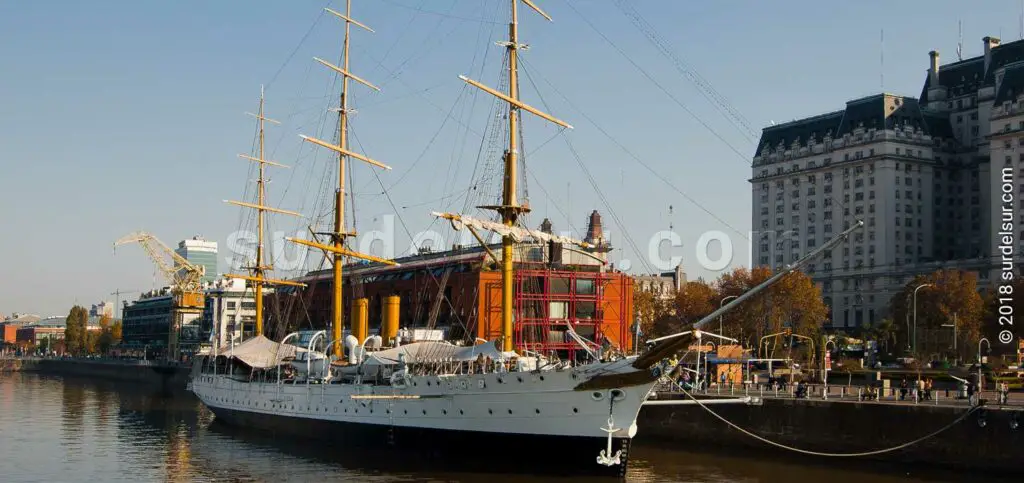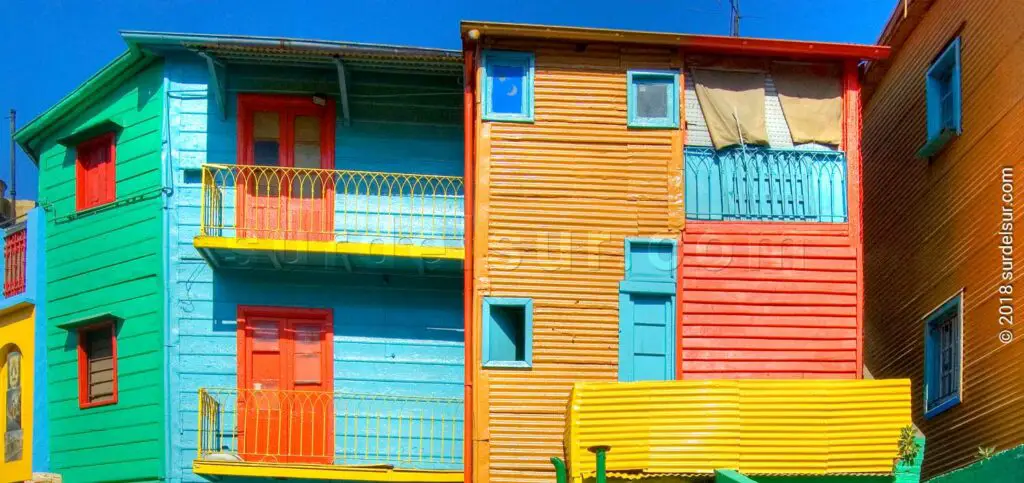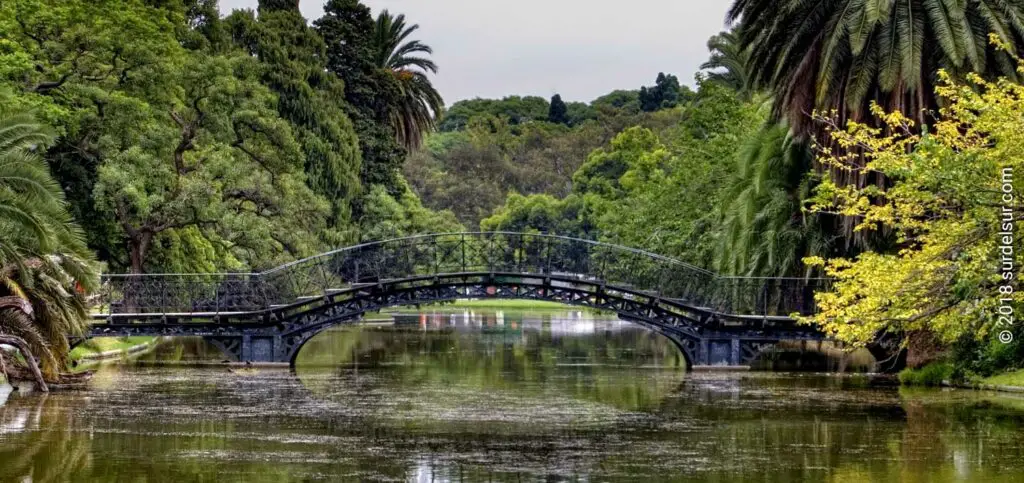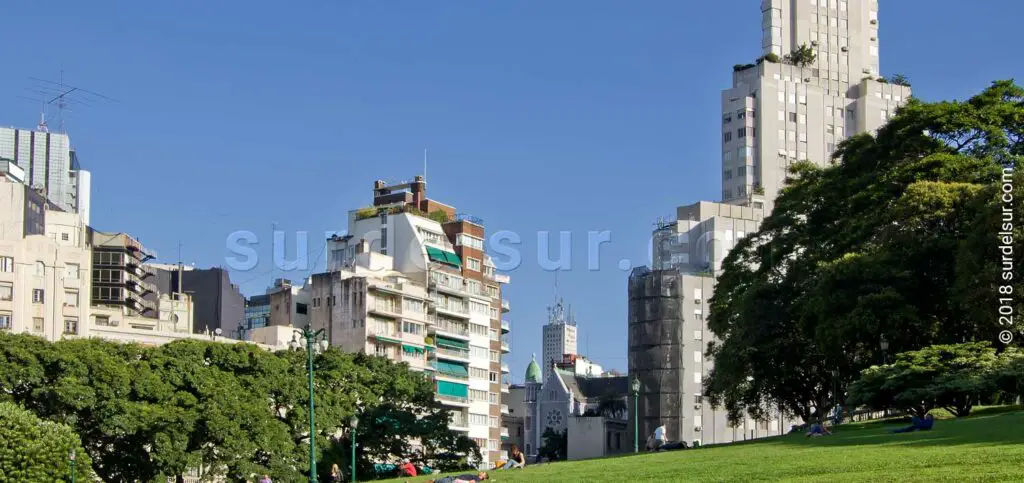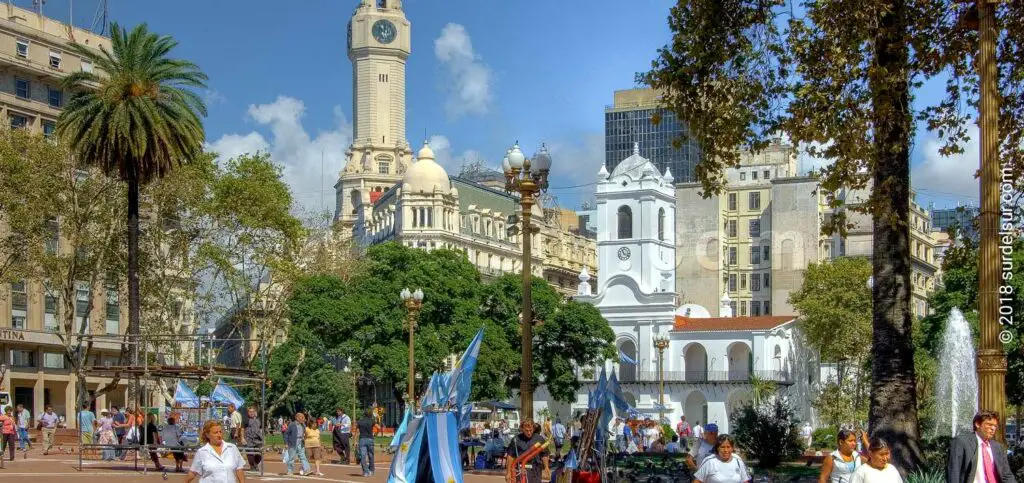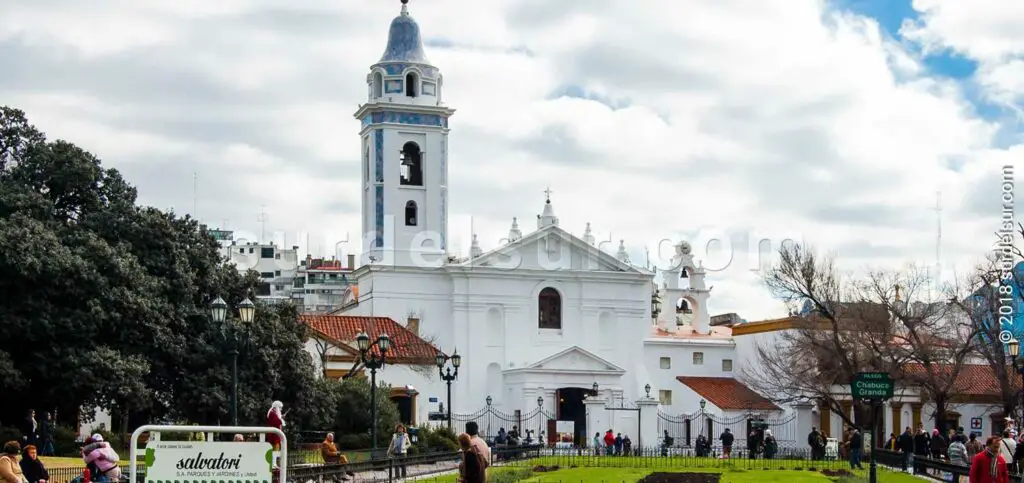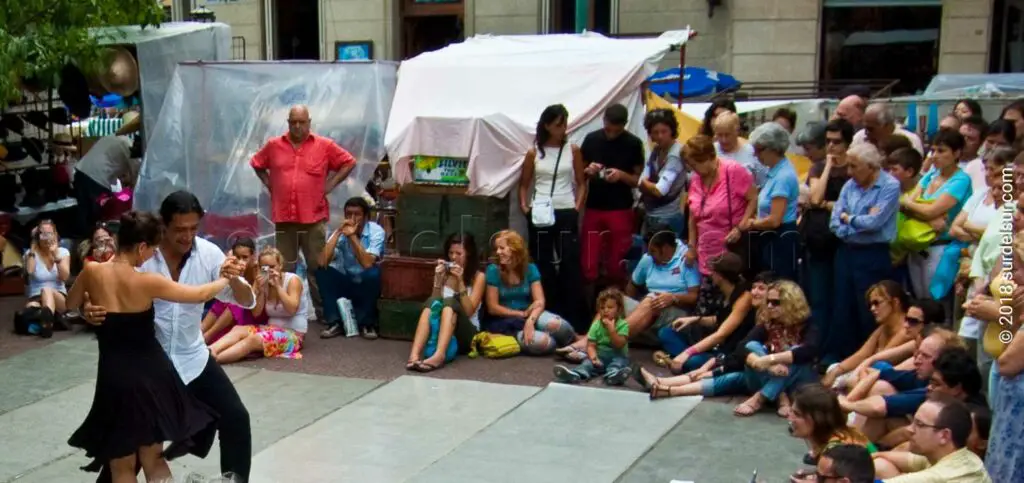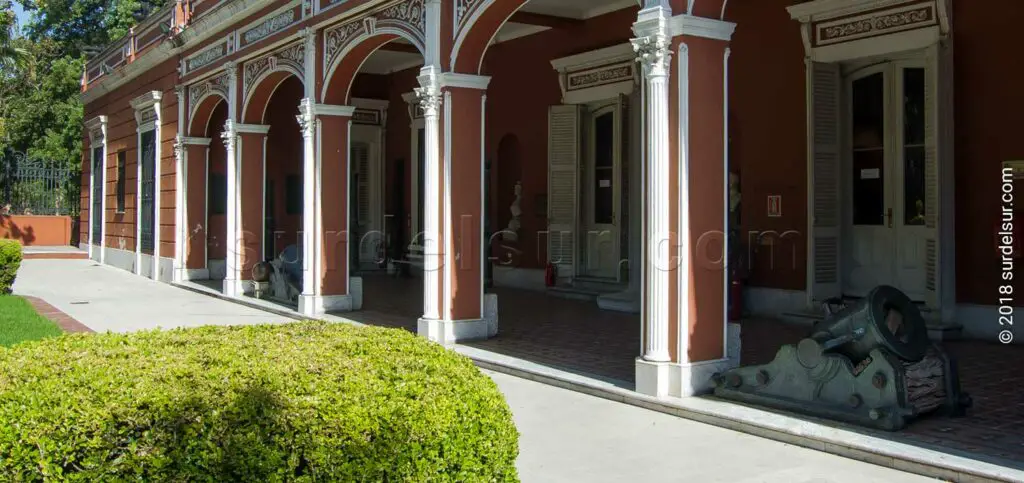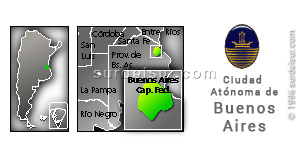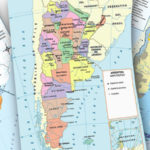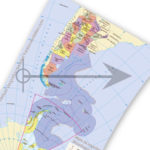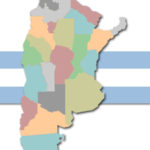The City of Buenos Aires, officially the Autonomous City of Buenos Aires, is the federal capital of the Argentine Republic. It is the most prominent city in Argentina and is among the twenty largest cities in the world and the twenty-five most influential globally. In addition, it stands out as a unique city for its tourist attractions, cultural diversity, gastronomy, and artistic manifestations.
What is the Autonomous City of Buenos Aires like?
Chosen as the Federal Capital of the Argentine Republic in 1880, it is the seat of the federal government. Later, it was consecrated by the 1996 Constitution as the Autonomous City of Buenos Aires, with the capacity to choose its executive, legislative and judicial power, as well as each of the provinces that make up the federal State. (Source: Constitution of the Autonomous City of Buenos Aires1996). Currently, Argentina is made up of 24 jurisdictions of the first order, 23 provinces, and an autonomous city with the same range of autonomy as any other province.
The City is located in the central and eastern region of the country, on the western shore of the Río de la Plata, on the southeast coast of South America. The surface is 200 km2 and its perimeter is 60 km. The population according to the 2022 census is 3,120,612 inhabitants in the City and 10,865,182 people in the peripheral zone of Greater Buenos Aires. That is to say, that added there are 13,985,794 inhabitants over a total population of Total population: 47,327,407 inhabitants. This means that a third of the country’s population lives in the Capital and GBA.
Among the diversity of climates that Argentina has, the climate in the City of Buenos Aires corresponds to the type of temperate climate in its variety of humid pampas. The average annual temperature is 18ºC (64°F).
Our language is Argentine Spanish, with some regional peculiarities of Buenos Aires. The currency is the Argentine peso. La moneda es el peso argentino.
CONTENTS
Hotels and Accommodations in Buenos Aires City
Buenos Aires receives permanent national and international tourism. Around 10 million tourists per year arrive in the federal capital. To house them, the city has an extensive hotel plant of 1, 2, 3, 4, and 5 stars. It also offers accommodation in hostels, informal accommodations, and temporary rentals.
According to the selection made by a group of expert professionals for the Experts’ Choice Awards, Buenos Aires was chosen as the best tourist destination in South America for the quality of its hotels, restaurants, and cultural attractions.
According to this evaluation, the most outstanding hotels in the City, with scores of more than 90 points, are the Palacio Duhau-Park Hyatt; the classic Alvear Palace; and the luxurious Faena de Puerto Madero.
Places to Visit in Buenos Aires Capital City of Argentina
Buenos Aires is an intense, diverse, and exciting city, the result of the cultural amalgam inherited from colonization and immigration flows. This melting pot of cultures also left its mark on the city’s eclectic skyline. The Spanish colonial, Greco-Roman, Art Deco, Art Nouveau, Neo-Gothic, and Bourbon French styles are mixed in its streets, and later the skyscrapers.
The 1,055 green spaces the city has are an obligatory walk among the tourist attractions of the metropolis, due to their exceptional design. Indeed, the most important parks were designed by the famous landscape designer Jules Charles Thays (1849-1934), for us Carlos Thays.
To tour the city, here we propose a list of some of the most emblematic places that cannot be missed. The proposal has historical monuments, residential areas, parks, and a port.
Iconic walks, impossible to miss, for those who want to know the essence of Buenos Aires: Historic Center of Plaza de Mayo, San Telmo, Parque Lezama, La Boca, Recoleta, Puerto Madero, Plaza San Martín, Palermo.
We have also selected a tourist service that presents several options to get to know the city.
Click on the tour now!
In Argentina, it is convenient to exchange your currency at the hotel for ARS and pay for services and excursions in the local currency. You will find that the prices are lower if you do it this way.
What is Buenos Aires Most Known for?
La Reina del Plata (The Queen of Silver), the Paris of South America, or simply Buenos Aires City, are all different names that the city has earned due to its unique attractions. In addition, the international community has awarded Buenos Aires various titles and awards, recognizing its tourist attractions, cultural diversity, gastronomy, and artistic manifestations.
- The urban conglomerate of Buenos Aires is considered among the 20 largest in the world.
- It is the 2nd largest urban conglomerate in Latin America
- Buenos Aires was chosen by UNESCO as a City of Design in 2005.
- In 2011, it was nominated as World Book Capital by UNESCO
- Buenos Aires is the only Latin American city that ranks among the top 25 Global Cities in the world (GaWC)
- It is also known as the Theater Capital, surpassed only by New York, Paris, and Tokyo, but almost on par with London. It is the headquarters of the Teatro Colón, one of the 5 best opera houses in the world.
As We Are: Porteño Identity
The inhabitants of Buenos Aires call ourselves porteños, which alludes to our condition as inhabitants of a city with a port. By the way, the port has had a fundamental role in the development of the city. The radio-centric structure of Argentina has its vertex in Buenos Aires. Precisely, the city has the shape of a fan with its epicenter in the port, the gateway for immigrants from whom most of us Argentines descend. We embody a true melting pot of races and cultures that shaped the cosmopolitan profile of our great metropolis.
Population Composition at the Beginning of the 19th century
Originally, the population was made up of original settlers, Spanish colonizers, and the African population. However, due to involvement in the Revolutionary War and plagues, the black male population was decimated, drastically decreasing the percentage of ethnicity in the population, reducing it to 4% in the current population’s genetic pool.
Immigration and Port Identity from 1850 to 1940
In 1856 the first immigrants arrived in Argentina from Switzerland and founded a colony called Esperanza in Santa Fe. Also in 1856, the Swiss Colony or Agricultural Colony of Baradero was founded in the province of Buenos Aires.
But it was especially from 1876 during the presidency of Nicolás Avellaneda (1874-1880), when Law No. 817, the National Immigration and Colonization Law of 1876, was promulgated, that European immigrants of different nationalities arrived on our shores. . The largest number of immigrants came from Spain and Italy.
Since 1930, internal migration from the provinces and immigration from neighboring countries also contributed their share.
Click here to read more about: The immigration movement in Argentina
Buenos Aires Culture
This melting pot is reflected in the music and dance of Buenos Aires. The tango and the lunfardo were of notorious influence in the urban culture and all the artistic manifestations of the porteña City of Buenos Aires.
The authors and artists, who emerged from this unique cultural and ethnic amalgamation, knew how to intensely express in the arts the dichotomy between the city and the countryside, immigration, and internal migrations. Both the plastic arts and literature, as well as theater and cinema, explain the phenomenon of the cultural identity of the porteños.
Our Language: Spanish from Argentina
What language is spoken in Argentina?
Our language is neutral Spanish or Spanish from Argentina,
We have some regional particularities in Buenos Aires Spanish. For example, the letter “ll” (elle) is pronounced like the letter “y”: it is said “yuvia” for rain, “yamar” for calling, etc. It is also used for informal treatment, as in the use of “vos” instead of “tu” and the use of “ché” to address another person.
Molded and transformed by the language of the immigrants, lunfardo was born, a form of porteño slang, that occupies a leading role in tango lyrics.
Read more about the wonderful convergence of lunfardo and tango, explained by maestro Gobello >>
Tourists or travelers interested in touring the City of Buenos Aires may be pleasantly surprised to find bilingual porteños, willing to offer guidance, who speaks Italian, English, and French fluently, among other languages.
Music and Dance of Buenos Aires City: The Tango
The City of Buenos Aires has had its own music and dance since 1850: the tango. Of shore origin, it was born on both banks of the Río de la Plata. Rejected by Buenos Aires society, it was imposed in European salons during the first decade of the 20th century. Thus, it obtained a passport back to our city, to definitively integrate itself into the culture of Buenos Aires.
Although tango is an inseparable part of the soul of the porteños, it also has hundreds of thousands of followers around the world. For this reason, since 2009, the Ministry of Culture of the Government of the City of Buenos Aires has organized a Tango Festival and World Dance Championship every year.
The Tango and Dance World Festival is usually held at the end of August. The festival offers recitals, classes, shows, milongas, and a large number of free activities. The championship ends with the election of the winning couple in two categories: “Tango de Pista” and “Teatro Escenario”.
Due to its exceptional characteristics, tango was declared by UNESCO, Intangible Cultural Heritage of Humanity, in 2009.
Entertaining summary about Argentine tango >>
Don’t miss out on knowing the World Heritage Sites of Argentina, which with tango add up to 13. Spanish only >>
Essential Facts about Buenos Aires City
The strategic location of the Autonomous City
The Autonomous City of Buenos Aires is located in the central and eastern parts of Argentina, in southern South America. Buenos Aires is the capital city of Argentina and is located in the northeast limit of Buenos Aires province, but doesn’t belong to it.
Located at the entrance to the Río de la Plata estuary, the widest in the world, it has a privileged geopolitical situation among the rest of the country’s cities. The radio-centric structure of Argentina has its apex in Buenos Aires. The road and rail networks that end at the port converge towards it. Precisely, the city is fan-shaped, with its epicenter in the port.
As a cosmopolitan and open city and port, it is not only the most important financial, commercial, and cultural hub in Argentina, but it is also among the most important in Latin America.
Despite its location in the south of South America, far from the great world centers, it always had the profile of an avant-garde metropolis linked to the world.
Natural Limits
The natural boundaries of the city are the Río de la Plata to the east, the Reconquista river valley to the north, and the Riachuelo de los Navíos to the south. It is a flat plateau, with a height of between 20 and 39 meters above the Río de la Plata.
Buenos Aires is part of the Pampas plain, which ends in a sharp slope forming the ravines upon reaching the river coast.
Pampean relief
Buenos Aires is a coastal city. It is the entrance to the vastness of the pampa, which ends in the ravines in front of the Ro de la Plata. The same ravines that we see in Recoleta, Plaza San Martín, Parque Lezama and Barrancas de Belgrano.
Originally crossed by multiple streams, they all had the same fate, they were blocked or tubed. None of them are currently visible in the city.
The Río de la Plata is an emblematic natural limit of the city and port of Buenos Aires. The Riachuelo de los Navíos is one of the main watercourses and was once of singular importance for the development of the city. Currently, the port of Buenos Aires is established on this coastal front.
Type of Weather
Among the diversity of climates that Argentina has, the climate in the city of Buenos Aires corresponds to the type of temperate climate in its variety of humid pampas. The average annual temperature is 18 °C (64 °F). Through the different seasons, temperatures vary on average from 8 °C to 28 °C. There are a few days of intense cold or heat.
The capital of Argentina is characterized by being an important tourist center that can be visited in any season of the year due to its mild climate.
Formation of the Megalopolis
In addition to being big and populated, Buenos Aires went beyond its physical capacity. As a result, it ended up joining the parties’ urban areas. Indeed, the Metropolitan Area is formed by the area comprised by the city of Buenos Aires, to which are added the 24 Greater Buenos Aires districts (GBA), belonging to the Province of Buenos Aires, which surround the city. This is how the Metropolitan Area of Buenos Aires (AMBA) was integrated.
It is the largest urban area in the country, and the second-largest in South America, Latin America, and the southern hemisphere. Together with São Paulo and Mexico City, it is one of the three Latin American cities in the “alpha” category, according to the Globalization and World Cities Research Network (GaWC) study. The City of Buenos Aires is among the cities with the highest quality of life in Latin America, and its per capita income is among the three highest in the region. It is the most visited city in South America. It is considered among the twenty largest urban conglomerates in the world.
Autonomous City of Buenos Aires: Size and Population
The city of Buenos Aires is truly populous. On its 200 km2 of surface, it houses 2,890,151 inhabitants, according to the last census of 2010. That is, the city itself has more than fifteen thousand inhabitants per square kilometer.
48 neighborhoods make up the population, the oldest of which are descended from parishes founded in the 19th century. The autonomous city constitutes one of the 24 districts in which the country is divided. It has its own executive, legislative, and judicial branches, as well as its own police force.
What is the Metropolitan Area of Buenos Aires (AMBA)
As we mentioned before, the Autonomous City of Buenos Aires (CABA) has 2,890,151 inhabitants. Yes, if we add the 12,806,866 inhabitants in the peripheral area of Greater Buenos Aires, we reach 15,697,017 inhabitants. This means that a third of the country’s population, 32%, lives in the capital and the GBA, forming the so-called AMBA. That is why it is considered among the largest conglomerates in the world.
Origin and Evolution of Buenos Aires
Strange as it may seem, our city was founded twice.
The first foundation by the advanced Don Pedro de Mendoza, in the current Parque Lezama. He baptized the city with the name of City and Port of Santa María de los Buenos Aires, on February 3, 1536.
Meanwhile, the second and definitive foundation of Buenos Aires was in charge of don Juan de Garay. It took place on June 11, 1580, in the current Plaza de Mayo, and was called City of the Holy Trinity and Puerto de Santa María de los Buenos Aires.
To know everything about the founding of Buenos Aires >>
The Big Village
It began as part of the Viceroyalty of Peru, until the commercial activity, in the territories of the Río de la Plata, determined the autonomy of the Viceroyalty of the Río de la Plata, created on August 1, 1776, with Buenos Aires as the capital of the Viceroyalty of the Río de la Plata.
The City of Buenos Aires led the Revolution of May 25, 1810, that took place in the Cabildo and in the Plaza de la Victoria, currently the Plaza de Mayo. The independence movement led to the subsequent Declaration and signing of the Act of Independence on July 9, 1816.
See more about Argentina before becoming a state >>
Buenos Aires Centralism
As a response to the unitary Constitution of 1819, the federal caudillos defeated the forces of the Directory in Cepeda in February 1820, with the consequent dissolution of central power. The civil war between Buenos Aires and the interior will delay the national organization for several decades.
The Argentine Confederation and the State of Buenos Aires
The Argentine Constitution of 1853 is the constitution that laid the legal foundations of the State of the current Argentine Republic, with the official name of the Argentine Confederation.
Deposed Juan Manuel de Rosas who governed the province of Buenos Aires between 1829 and 1852, the provinces are heading toward the national organization. Under the government of Justo José de Urquiza, winner of Caseros and provisional director of the Argentine Confederation, the General Constituent Congress is held in Santa Fe.
For this purpose, the representatives of thirteen of the fourteen then-existing Argentine provinces meet, with the significant absence of the Province of Buenos Aires. This General Constituent Congress promulgates the National Constitution on May 1, 1853, a fundamental law of Argentina that takes as its model the “Bases” of Alberdi. The Confederation constitutes its provisional capital in the City of Paraná.
The province of Buenos Aires, which separated from the Argentine Confederation, constituted a parallel state of the State of Buenos Aires until 1861.
The City of Buenos Aires is once again the Capital of the Confederation
In 1861 the province of Buenos Aires rejoined the Confederation. On October 8, 1862, it was determined through Law 19 that the headquarters of the national authorities for the next five years would be the city of Buenos Aires.
In other words, the city of Buenos Aires houses the national government, but it is part of the province of Buenos Aires. The bidding of interests between Buenos Aire’s centralism and the provinces would have begun to be prosecuted with the Federal Constitution of 1853. However, it would be necessary to wait until 1880, for Buenos Aires to be consecrated the Federal Capital of the Argentine Republic.
Capitalization of Buenos Aires (1880)
At that time, the Río de la Plata was an attractive commercial center that was trying to break away from the Spanish monopoly. This is how the radio-centric structure of our country begins to be generated, with its vertex in Buenos Aires. The road and rail network that ends at the port converge towards it.
Despite the fact that the country was unified after decades of internal struggles, the conflict over the federalization of the city of Buenos Aires still existed. The province of Buenos Aires did not want to cede to the city of Buenos Aires, both for economic reasons and political reasons.
The National Executive Branch resided in Buenos Aires but had no control or jurisdiction in the city, it was simply a “stone guest.” This sparked friction between the national and provincial governments that led to a series of armed clashes called the Revolution of 1880. The conflict ended with the defeat of the troops of Governor Carlos Tejedor and the federalization of the city during the government of Nicolás Avellaneda.
The city of Buenos Aires is ceded by the province of Buenos Aires to the Nation. In this way, the City of Buenos Aires is chosen Federal Capital of the Argentine Republic and the seat of the national government, with total independence from the province of Buenos Aires. Meanwhile, the province of Buenos Aires founded its own capital in 1882: the city of La Plata.
Immigration arrives in Cosmopolis
The city’s urban growth would receive a new boost from the currents of immigration from Europe. But there was no sanitary system in the city. Both a drinking water network and sewers were absent.
As a consequence of the lack of foresight, in 1867 there was an epidemic of cholera, and then in 1871 yellow fever arrived. There were 20,000 deaths from fever, more than 10% of the population.
The inhabitants of the sumptuous houses of the Barrio Sur, migrated northward, fleeing from the plague, while the mansions were used as tenements to shelter immigrants, giving rise to the conventillo. The tango, the theater, and the cinema knew how to correctly describe this period of life in Buenos Aires.
Read more about the immigration movement in Argentina >>
The Modern City
In the following decades, the colonial city would enter modernity, with the remodeling of the urban layout. Streets were opened, and avenues and parks were laid out. The urban infrastructure works were completed. The network of drinking water and sewers, pavements, and means of transport.
Diagonal Norte was a hub of business activity, and its splendid view came to an end on 9 Julio with the controversial Obelisk constructed in 1936. Avenida de Mayo was the epicenter of cultural, artistic, and social life.
See more about the formation of the Argentine State >>
Migrations and the Megalopolis
By 1947, Buenos Aires had almost 3 million inhabitants, a figure that remains to this day.
After the waves of immigration from Europe, immigration from nearby nations and internal mobility emerged, transforming Buenos Aires into a megalopolis.
The construction of General Paz, from 1936 to 1941, marked the limit between the city and the suburb.
Later, the Building Code of 1944 and the Horizontal Property Law in 1948, together with a large private investment, changed the profile of the building development of Buenos Aires.
In 1950 and 1952, the state made the largest historical investment in popular housing. Located in Greater Buenos Aires, it generated the industrial belt around the circulation axes.
Declaration of the Autonomous City of Buenos Aires (1996)
The 1994 Argentine constitutional revision introduced art. 129, which stipulated that the city would have more autonomy. This means that it could dictate its own constitution, and have an autonomous government. Currently, Argentina is made up of 24 jurisdictions of the first order, 23 provinces, and the Autonomous City of Buenos Aires with the same range of autonomy as any other province.
The Constituent Convention that ended on October 1, 1996, sanctioned the Constitution of the City of Buenos Aires. That year the first head of the Buenos Aires government was elected.
As of March 2015, the seat of the government of the City of Buenos Aires moved to Parque Patricios, in front of the park of the same name. This building was conceived with environmental care techniques and standards that apply to the international LEED certification (Leadership in Energy and Environmental Design) and place it as the first public building in South America to reach that level.

